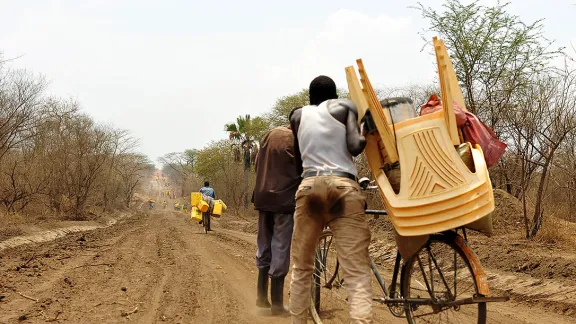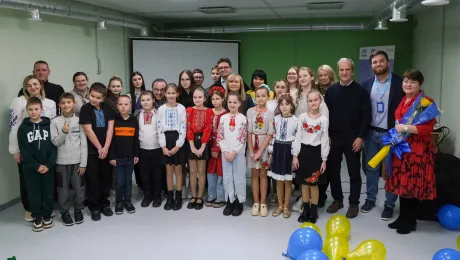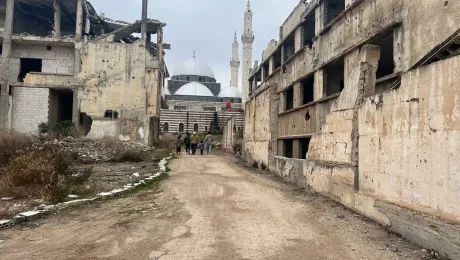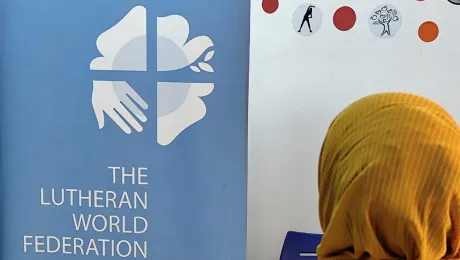
A refugee carts goods toward Uganda
Three days to three weeks – that’s the length of time refugees from South Sudan describe taking to get to north Uganda. From the border onwards, they are being met by aid organizations such as The Lutheran World Federation (LWF) which register people with special needs and give out initial relief goods.
For most, this is the beginning of a new life. They have brought all their belongings, knowing they cannot go back anytime soon. This photo essay describes the first steps of life as a refugee in Uganda.
28 February 2017
Photos: LWF/C. Kästner

The border between South Sudan and Uganda. The refugees mostly come from the South Sudanese districts of Central and Eastern Equatoria. From field offices in Moyo and Pakelle, LWF is working in Moyo and Adjumani districts, in the refugee camps of Palorinya, Pagirinya, Ayilo, Olua, Boroli, Njumanzi, Baratuku and Elema. LWF also works at the collection points in Elegu and Laufori.

This family has just crossed the unmarked border between South Sudan and Uganda. The first collection center, where refugees are received by aid organizations and local authorities, is situated about 7km from the border. Many refugees bring all their belongings, including furniture and livestock.

Officially a refugee: At Laufori collection center, refugees are registered by the Ugandan Office of the Prime Minister and given refugee status. Uganda has welcomed about 800,000 refugees from its neighbour since the outbreak of the conflict in December 2013 and a new surge of violence in July 2016.

The LWF desk at Laufori collection center focuses on registering people with special needs: elderly, people with disabilities, unaccompanied children, new mothers and pregnant women. More that 89 percent of new arrivals are women and children.

Zone 1, Palorinya. The refugees are taken here by bus or truck from the registration in Laufori. They wait to be given a plot of land to build a hut on, and some core relief items. However, due to the large number of new arrivals, local authorities are overwhelmed – the people therefore have to wait for days in the open until they can start building shelter.

Baby Emmanuel is only five days old. His mother gave birth while fleeing South Sudan. LWF provided relief goods to the family and moved them to a more sheltered place.

A blue wristband marks people with special needs. Of the refugees, 58 percent are children. Women and children together make up almost 90 percent.

Once a day, the waiting refugees receive a hot meal of posho (maize flour porridge) and beans. After being allocated a plot of land, they will receive food packs with rice, beans and other food items which they can prepare and cook themselves, together with the household items they were not able to bring.

Two weeks later: On their land plots, the refugees are allowed to construct tukuls, traditional houses of clay. These houses are semi-permanent and will collapse in the rain as soon as the roof is taken off. Doko (26) arrived two weeks ago from Kajo Keji. He has already built a hut for his three children and is now making bricks for a second house.

Women from the refugee and the host communities work together on opening restaurants. The local host community has been extremely welcoming to the refugees, to the point of giving away land of their own to host South Sudanese. Many of them have experienced displacement themselves. “The same could happen to us, and we know that we would be welcome at their place,” one of them says.


